When using ammunition to prep it’s good to isolate your preps to a few specific calibers.
It’s better to stock a lot of ammo of a few calibers than a little ammo in a lot of calibers. Here is the five I’ve isolated as the best choices not only for their effectiveness but for cost, availability, and potential.
#1. 22 LR
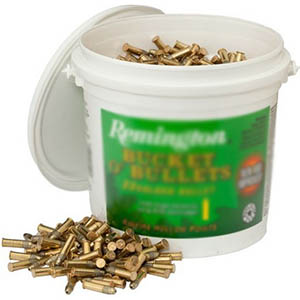 The 22 Long Rifle cartridge is one of the most popular cartridges in the world. It’s been around for over a hundred years and is the most produced cartridge for the civilian market. It makes an excellent prepper cartridge for numerous reasons. First and foremost they are a very lightweight round. A brick of 500 can easily be carried in a cargo pocket, and companies, like Federal, even sell sealed cans designed to be stored long term.
The 22 Long Rifle cartridge is one of the most popular cartridges in the world. It’s been around for over a hundred years and is the most produced cartridge for the civilian market. It makes an excellent prepper cartridge for numerous reasons. First and foremost they are a very lightweight round. A brick of 500 can easily be carried in a cargo pocket, and companies, like Federal, even sell sealed cans designed to be stored long term.
22 LR is a poor self-defense round, but it is an excellent general purpose round. It can be used for self-defense and is deadly. It can also be used for picking off small game, getting rid of pests, and is quite quiet compared to standard centerfire ammunition. A single brick of 22 can be a total lifesaver when it comes to a long-term disaster situation.
The 22 long rifle round is actually quite cheap when compared to other rounds, I purchased a literal bucket of 1,500 rounds for 60 dollars. In the last few years, the price has risen and finding 22 LR has been more difficult. However, it seems to be returning to stores and prices are dropping rapidly since the 2016 election ended.
Related: The Top 5 .22 LR Survival Rifles
#2. 9mm
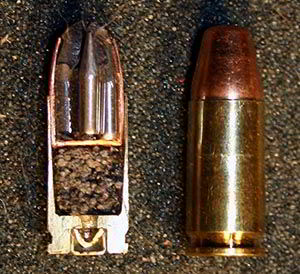 The 9mm round is easily the best pistol round simply because of how common and affordable it is. It’s the cheapest self-defense pistol caliber and is abundant in supply. 9mm is also the chosen round of the United States military and is quickly becoming the new standard for law enforcement. All major handgun manufacturers produce a variant of their handgun in 9mm, and some companies only produce 9mm handguns.
The 9mm round is easily the best pistol round simply because of how common and affordable it is. It’s the cheapest self-defense pistol caliber and is abundant in supply. 9mm is also the chosen round of the United States military and is quickly becoming the new standard for law enforcement. All major handgun manufacturers produce a variant of their handgun in 9mm, and some companies only produce 9mm handguns.
Also in terms of pistol caliber carbines, the 9mm is the most abundant. In fact, in many situations, it’s the only choice for a pistol caliber rifle. 9mm ammunition also allows for large capacities with weapons like the CZ P09 being capable of containing 19 rounds in a flush fit magazine. Also, modern 9mm ammunition is just as capable of stopping an attacker as a 40 S&W and 45 ACP.
The abundance of 9mm ammo in use by military and police forces makes it possible to scavenge ammunition easier than most other calibers. 9mm ammunition is also light recoiling and easy shooting, making it an excellent choice for anyone of any size.
Related: How to Build Your Own Ghost Gun
#3. 12 Gauge
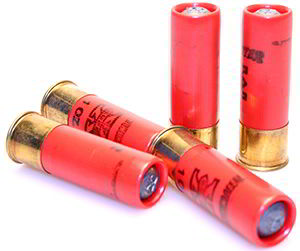 The classic 12 gauge round is easily one of the most available rounds of ammunition in the world. Even during the great ammunition drought of 2012 and 2013, 12 gauge ammunition was still easy to find. 12 gauge ammo and 12 gauge shotguns are one of the most versatile gun and ammo choices for preppers. A 12 gauge can take game ranging from squirrel to bear by just changing the load.
The classic 12 gauge round is easily one of the most available rounds of ammunition in the world. Even during the great ammunition drought of 2012 and 2013, 12 gauge ammunition was still easy to find. 12 gauge ammo and 12 gauge shotguns are one of the most versatile gun and ammo choices for preppers. A 12 gauge can take game ranging from squirrel to bear by just changing the load.
As a self-defense load, it has been used by generations of police officers who rely on a long arm. The 12 gauge round is incredibly powerful and quite common. The biggest issue come with the cost of effective buckshot and slugs. They aren’t the cheapest rounds out there. The ammunition also tends to be big and heavy.
The 12 gauge is an immensely powerful round that has the ability to utterly destroy a target when needed. 12 gauge ammunition is incredibly common and if you could only have one gun I’d choose the 12 gauge shotgun and a pile of buck, bird, and slugs for it. It’s powerful, versatile, and doesn’t disappear when an ammo drought occurs.
Related: Best Gun for Home Defense
#4. 5.56/223
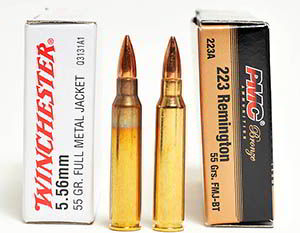 The 5.56 round is probably one of the most in demand rifles out there. The AR-15 is easily the most popular rifle in the United States. This often means that 5.56 or 223 ammo is in stock absolutely everywhere. The ammunition has dropped greatly in price and it’s easily the most common round out there. The 5.56 is a lightweight, light recoiling round that semi-auto defensive rifles are commonly chambered in.
The 5.56 round is probably one of the most in demand rifles out there. The AR-15 is easily the most popular rifle in the United States. This often means that 5.56 or 223 ammo is in stock absolutely everywhere. The ammunition has dropped greatly in price and it’s easily the most common round out there. The 5.56 is a lightweight, light recoiling round that semi-auto defensive rifles are commonly chambered in.
The 5.56 is a highly effective defensive caliber that has proven itself well overseas. I know from first-hand experience in Afghanistan that the 5.56 can get the job done, as long as the shooter behind it can do their part. The 5.56 is a low recoil round that is accurate up to five hundred yards with iron sights. The rounds also have a lot of different loading available, which includes defensive, hunting, and standard ball projectiles. This makes the round versatile, and capable.
Speaking of hunting the round can effectively take medium game animals quite easily. Deer and pigs are no match for it. It’s also more potent for dealing with potentially dangerous pests like coyotes and feral dogs.
Related: AR-15 Upgrades You Should Think About
#5. 308 /7.62 NATO
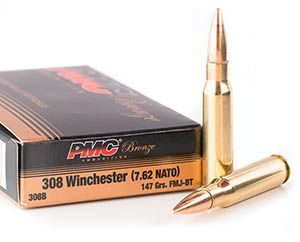 When it comes to extended ranges or shooting through serious barriers the 308 or 7.62 NATO are the round to go to. Any gun labeled 308 can accept 7.62 NATO, but guns chambered for 7.62 NATO should not fire 308. Most civilian firearms in this category are 308 anyway. The 308 allows for the taking nearly American game animal. It’s a good choice for a scoped bolt gun designed for long range engagements.
When it comes to extended ranges or shooting through serious barriers the 308 or 7.62 NATO are the round to go to. Any gun labeled 308 can accept 7.62 NATO, but guns chambered for 7.62 NATO should not fire 308. Most civilian firearms in this category are 308 anyway. The 308 allows for the taking nearly American game animal. It’s a good choice for a scoped bolt gun designed for long range engagements.
As a battle rifle, its potent are breaking through cover, including vehicle doors, brick, and wood walls, and even light metal walls. There isn’t much that can deflect a 30 caliber projectile. The round is also better suited for defeating hard body armor and has the ability to go through an engine block.
Of course, the ammunition isn’t cheap and isn’t as common as 5.56, but you’ll find it in any big box store, or gun store worth their spit. The 308 round is the most common 30 caliber, medium to long range caliber. There is also a wider variety of rifles built around this round, including semi-automatic, bolt actions, and even lever actions. This round is also the standard for medium machine guns and sniper rifles in the United States Military.
Related:
 How Much Ammo Should You Stock Pile
How Much Ammo Should You Stock Pile
7 Actions to Take Immediately Following an EMP Strike (Video)

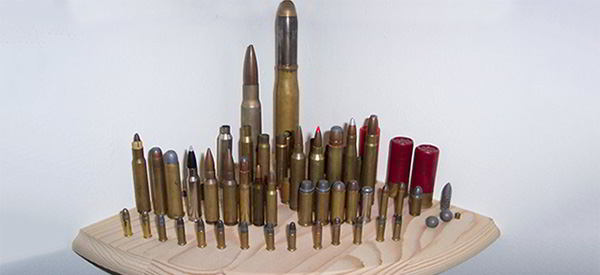





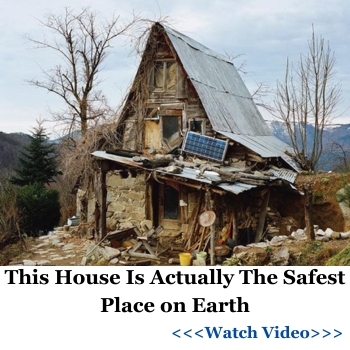







I’m certainly no gun expert, but I believe the author of this article has it backwards with regard to the .308/7.62 interchangeability question. Military arms marked 5.56 and .7.62 can fire the civilian rounds which are rated at a lower
SAAMI pressure than the military rounds, but 5.56 should never be fired in a .223 marked rifle. As I understand it, the 7,62 cartridge can be fired in .308 rifles, but it may lead to difficulties. Various gun magazines have discussed this issue in the past couple of years with authors of the articles far more experienced in firearms than I. I would urge you to do some research on the issue and please, please, take the author’s credentials into account before assigning credibility to the article. Other than that flaw, the article is cogent. The 12 ga. shotgun is not quite the devastator the author makes it out to be and the .22 is not as toothless either. A great many homicides are accomplished with the lowly .22. If you think it is such a puny round may I shoot you a couple of time with it? Especially when one considers that in a societal breakdown situation, even the smallest wound may prove fatal due to lack of antibiotics. Every bullet wound introduces foreign material into the wound track unless you are shot nude and the bullet goes from muzzle to your skin. Even then, it leaves lead particles and gunpowder particles in the track.
While I agree with you for most of your commentary, I have one little disagreement. Coming from a Fire and EMS background, the 22 is one of the deadliest calibers out there. I have several facts to back up this point. Even though it does not have the “stopping” power of the larger calibers it is still super deadly. The 22’s deadliness comes from its small size. Numberous cases have been documented that a person shot with a 22 didn’t even know they had been shot because “it just felt like something stung me.” Unless of course they were hit multiple times at close range and knew they were being shot at. Unlike the larger rounds that have a tendency to just blow right through the target a 22 will enter the target and bounce around cause massive internal injury that is a lot of time so massive that bleeding internally cannot be stopped or repaired before death occurs.
“super deadly”?
More deadly, say, than any other caliber?
I mean, dead is dead.
I do get it though. To an unsuspecting perp that underestimates the round and ends up shot by one,
he’s a goner and in a very painful way.
The main issue with .22 as a defense round is, although the bad guy gets dead, he doesn’t get dead quick enough to prevent him from doing great harm first.
I would not profess the deadliness of the .22 as a self defense round for that reason alone.
The point is to stop the threat before the assailant has the opportunity to harm you. You are proving it’s inefficiency.
.224 Wylde, 5.56 NATO, 7.62x39mm, and 7.62 NATO would be the best chambers to have, pretty much in that order, to utilize the most abundant sources of rifle ammunition in the US.
I think two things must be taken into consideration,is the 22LR,being fired from a rifle or handgun,and deadly are we talking,big 4-legged creatures like deer,or 2-legged creatures like or small game,I personally know of no one who uses a 22LR,for home defense(rifle or handgun.I believe when people;anyone says deadly they have to be more specific,especially with links to an article on that.And how many rounds fired especially in a home defense situation,is it an average of 1 or 2 or multiple rounds,and I say this for another(at least handgun round)it’s easy to say it’s deadly but that is common with any caliber round.
Sorry but you are incorrect, author has it correct. You might be assuming this because the reverse applies to the 5.56. The 223 is loaded to lower pressures than the 5.56, but in the case of the 7.62 it’s the 308 that has more of a punch and the round sits just slightly differently in the chamber.
The Author has it wrong. 7.62 NATO and 5.56 NATO are rated at higher pressures than the .308 and .223. The rounds are interchangable but you’re risking blowing up your rifle and hurting yourself if you try to fire a NATO round out of a 308 or 223
no, he has it right. .308 rifles can take the lower powered 7.62…BUT…it is the other way ’round regarding 5.56 and .223.
After looking into it, you’re right. 7.62 NATO sucks. I always assumed NATO rounds were rated at higher maximum pressure due to my familiarity with with 5.56 NATO and 9mm NATO. Not much of an AR-10 dude, obviously. lol
I don’t agree. First off a properly placed shot with a 12 gauge is devastating. If you have never personally seen it you won’t understand. Second the 308 is actually hotter than the 7.62 while a 5.56 has more chamber pressure than a 223. As for the 22 it is deadly. But so is a knife. The 22 is not a formidable defense round. The object of self defense weapons is to stop the threat immediately. While a 22 will stop the threat it will not do it quickly unless it is a head shot which is difficult at best in a stressful situation.
I think your comment is backwards. 223 and 308 are higher pressure rounds than 5.56 and 7.62. So 5.56 and 7.62 can be fired in high pressure 223 and 308 barrels, but not vice versa. I checked with my local gunsmith for accuracy.
Youre right, youre no gun expert.
To be clear, you may indeed safely fire 7.62×51 from a .308 chamber but CANNOT safely fire a .308 round from a 7.62 chamber; you may safely fire a .223 rem from a 5.56mm chamber but CANNOT safely fire a 5.56mm round from a .223 rem chamber. The author was CORRECT.
Author was correct about the 308 vs 7.62×51 as the military catridge is designed to handle a lower max pressure. So shooting a 308 in a rifle labeled for the 7.62×51, is probably not a good idea.
7.62 NATO is rated for a lower max pressure than .308 Winchester. 7.62 NATO’s rating is about 60,000 PSI, and .308 Win’s is 62,000. It’s not much of a difference, but it’s a difference.
While this message is good you need to re-title the article to “Best Calibers” instead of best types. Best types to me points towards bullet types such as hollow point, full metal jacket, soft point, hydrashock, etc.
good on the grammar mjf, but I think it falls on deaf ears..and the author is not an american or English speaking in general…either that or talking to him would make one giggle…
Not sure #5 is completely accurate. The interchangeability of the ammo is largely dependent on the rifle. The AR10B chambered for 7.62×51 can fire factory loaded .308. It is not recommended to hot loaded .308s for use in the 7.62 though.
A tight .308 might have some problems with the 7.62 round though. Don’t have a .308, so this is based on info from others.
I’m new to prepping and haven’t got any pistols, all I have is long rifles and pistol caliber carbines figuring just that, If I found ammo one of my guns would fire it.
So far I have covered, .22, .22LR, .223/.556, 9mm, 45ACP and 12gauge. Should I get a .308?
Allen, a gun “guru” is quoted as saying, “A pistol is what you use to stay in the fight until you can get to your rifle.”
A pistol is a convenience. It is a compromise. It is a little awkward showing up at the office with a 12 gauge slung on your back. Sitting down to dinner in a fine restaurant is liable to draw stares at best with a 5.56 on a one point sling, plus it gets in the way of eating. I just read an account of a bad guy getting shot 17 times with a +P .45 acp who didn’t quit the fight until he took one in the brain bucket. I have never heard of someone continuing to fight after being shot 17 times with any kind of rifle.
As for acquiring a .308, if you can afford it and want it, why not? Do you NEED it? You have to ask yourself several questions. 1. Am I an experienced rifle shooter so that I can take advantage of the extra range the .308 provides? Am I planning on doing any hunting of large animals in an apocalyptic event? Assuming there are any large animals left to hunt, how experienced am I in hunting animals that have been vigorously hunted? Do I seriously consider that I will need long range capability in a SHTF scenario? Do I currently have a place where I can acquire the skill set needed to learn how to effectively utilize a long range weapon, including range estimation and wind doping? Can I afford the cost of the ammunition to acquire those skills?
None of us really knows what skill sets we will need in a SHTF situation, we can only estimate and guess and plan for the most likely situations, not some far-fetched scenario. If I lived along the gulf coast, I wouldn’t plan for a super volcano erupting any time soon but I sure would plan for a hurricane disrupting things for a prolonged period. If I lived in North Dakota I wouldn’t much worry about a hurricane, but I sure would anticipate that I might get snowed in for a week or ten days and plan accordingly and if I lived near a river, I would plan on spring thaw caused flooding and stock up on sand bags. See what I mean? Here in Kalyforniya we don’t have to worry about hurricanes; we do have to consider earthquakes and the politicians screwing us over, so we all have different situations we have to plan for, but they should be logical situations, not some far-fetched Martians are landing situation. Hope this helps you focus you decision making.
WOW, now that was an excellent response to a serious question, plus I got a chuckle out of it. Thank you 🙂
What was the gun guru talking about,combat/shtf/WROL or home defense,the latter is going to apply to most people,for home defense it’s a ridiculous statement,so I use my 357mag.so I can can get to myM1A1,and fire the rifle in my home possibly across the room,god forbid but any could miss especially in stressful circumstances,so other situations(yes)but for home defense in my situation(suburbia USA)It’s asking for trouble,and yes I know a handgun round that missed the target is a problem,but not like a(7.62×51/308
To add to Left Coast Chucks,,, take terrain into account. In my area with is a lush sub tropical area there is less need for a longer range 7.62/308. I will seldom have 500 plus meters of open area. If you are in a desert environment by all means it would be wise to consider it. In that environment it would suck to have an adversary firing on you with his 7.62/308 while you wait until he gets into range with you 5.56.
Allen might want to consider 7.62X39. Effective to 300yds. Large enough for hunting and for self defense. Ammo is very available. Mike
I would skip the .308 and get a side arm since you have none. You are unlikely to carry two rifles at a time and be carrying spare ammo and magazines for both investigating a noise in your house .
If a rifle or shotgun goes click instead of bang, having a reliable six shooter(or 1911) in .45 ACP on your hip would be most welcome.
If I could only carry two firearms and the ammo for them when SHTF it would most likely be a 12 gauge and Ruger Mark 1 or 2 .22lr.
Reason for the .22lr is simple, I am very accurate either or both hands with it and I can easily carry 200 rounds and 5 loaded magazines. Plus, it is very reliable. Plus it is very hard to accidentally lose the magazine or unlatch it, unlike my former Ruger 944.
I liked my Ruger .44 magnum SA with 8″? barrel, but, only I could fire it in my family and it is not exactly concealable and easily fired with one hand.
So, I say get a practical bullet proof sidearm that matches a long gun. If I had a scoped .44 magnum carbine and .44 sidearm I would not feel naked unless I am having delusions of fighting off platoons of commies with AK-74s or something.
Yes, I carry 9mm or bigger concealed, but, if I am inside my house shooting I guarantee .22lr is much better for hearing and sight in a hallway vs. 40 S&W.
If you have a big enough basement you can practice indoors with your .22lr sidearm. I really liked my stainless Ruger Six , but, it was painfully slow to reload. Plus, it takes .22 magnum too. Being able to practice in lock down is not to be overlooked.
Stay safe, stay sane.
I possibly made a missstake. I’ve been using 5.56 ball ammo in my .223 rifles for years. I’ve experienced no issues. Same with 7.62 in .308 rifles.
The Ruger Mini-14 is a little confusing. The barrel is marked .223, however, Ruger states that it is all right to use 5.56 in their Mini-14. There is a lot of technical info about neck length and chamber free-bore that enters into the picture. Because all machines are made to “tolerances” meaning the specifications called for in the manufacturing plans are not met precisely, you might have a .223 that according to factory specifications cannot handle 5.56, yet due to “tolerances” it handles 5.56 safely. If you are concerned, my recommendation would be to take the rifle to a competent (ah, there’s the rub) gunsmith and have him make a cast of your rifle’s chamber and determine if the rifle will safely fire 5.56. OR, you could just stick to purchasing .223 in the future and be on the safe side.
As I understand the situation with 7.62/.308, there is less of a problem. That’s why I recommended checking American Rifleman website and see what they have to say. Always examine the credentials of the expounder of the opinion in assessing whether he or she could actually know what they are talking about. Be cautious of someone who states his opinion in absolute terms, i.e.., “You should never fire X ammunition in Y chambered rifles,” unless he qualifies it with something like, “I worked for Remington in their ammunition department for 25 years and personally conducted testing involving X ammunition in Y chambers and I can state that as a result of 5 years of detailed study we determined the following. . .” Check Remington’s website and see if they or any major manufacturers have anything to say on the issue. I would trust what a major ammunition manufacturer said before I would trust some pseudonymed poster (such as me, for instance.)
I used to be an avid reloader of my own ammunition. If you look at the breakdown of a .223 cartridge verses a 5.56 x 45 cartridge, they are EXACTLY the same. Yes there is a difference of chamber pressures. I can never remember exactly which is high but I think the NATO rounds have a higher chamber pressure. Which ever one it is, the other claim that their weapon is not designed to handle the higher chamber pressures therefore there is a risk of firearm failure when firing the round. If you go onto wikipedia and do a search for the 5.56 x 45 NATO it will tell you the particulars. The same goes for the .308 verses the 7.62 x 54 NATO. Also one difference is cartridge overall length. As a reloader, ONE way you can control accuracy is with headspace and that is achieved through cartridge length. This is only achievable with a bolt action rifle because with a magazine fed round, the cartridges have to “fit” in the magazine.
MJF1879 I hope you meant the 7.62×51,, not the 7.62×54, the latter being also known as the 7.62x54R (“R” for Russian) which is the round used in the Russian WWII Mosin Nagant which has gained in popularity. It is a longer round loaded at different pressures then the 7.62×51. Never interchange these!
I thought I read long ago that the Russians made the 7.62×54 so they could use it or the 7.62 x51 American so they could use our ammo but we couldn’t use theirs don’t know if that is correct or not but would be interested to know.
The 7.62 x 54R was designed in 1891,a”few”years before the 7.62×51 which came along approx. 1953 or so. Plus Russian round has a tapered case and a rim,like a 30-30. The 7.62×51 has a straight case and is rimless
If that is indeed the case I stand corrected. The .308 or 7.62 x 5** are not a round I have used a lot but I ran across the data for it while I was researching the 5.56 vs .223.
Not only is the 7.62 x 54R longer than the 7.62 x 51, the 54R is a rimmed case whereas the 51 is not rimmed. Big difference. In addition, the 7.62 x 51 is .308 in diameter whereas the 7,62 x 54R is .311 to .312 in diameter, thus assuming you can get it to chamber and get the bolt of your .308 Winchester or 7.62 x 51 M1A to close on the Russian round, the greater diameter will increase your chamber pressures to dangerous levels. The “R” does not stand for “Russian” but stands for “rimmed”. The U.S., measures their barrel diameter from groove to groove. The
Russians measure their barrel diameter from land to land thus their 7.62 bullet is slightly larger than our 7.62 bullet. Check any reloading manual by a major manufacturer and it will explain the difference. During WWII, in its rush to get rifles into the hands of Ivan Ivanovich, the Russians were less than precise in their gun manufacturing process. Thus a Noisin-Nagant may have a bore of anywhere from .310 to .312. Of course you can fire a .308 bullet down a Russian barrel and it will exit however it may not be as accurate as the rifle is capable of using the proper sized bullet. It is always handy to have a slug made of the barrel of a Moisin-Nagant to determine which size bullet is best to use.
I got that backwards. The Russians measure from groove to groove as do the British and the Japanese when they were making their own weapons. The U.S. measures from land to land. Thus our bullets measure out at .308 of an inch from land to land and the Russians measure out at .311 to .312 as does the British .303. But we all call it .30 caliber or 7.62. Does it make sense? No, it certainly does not. We denote bullets by caliber and powder load; by caliber and cartridge length but what about a .38 special? It is really .357 in diameter. What’s with that? Well, it’s an old black powder cartridge and was a heeled bullet that measured .38. They kept the name but changed the bullet diameter if I remember my bullet history correctly. How about th 30-06? Well, that’s the year the cartridge entered service, not the powder charge. Then we have a new bullet the .28-264. What’s that? a .28 caliber 264 mm long? The skinniest tank gun in the world? .28 caliber with 264 grans of propellant? I’ll let you fire that one off, thank you. I want to be standing 50 feet away. No, it is a no-sense name applied to a proprietary cartridge by the manufacturer. Hey, you invent the cartridge I guess you can call it what you want regardless of whether it makes sense or not. Cartridges and what they are called is a complex field and quite interesting to some. Again, take your advice from someone who has some quantifiable experience in the field, not some nameless imposter like left coast chuck.
The “R” is for rimmed (cartridge) not ”russian”. Another example is compared with 7.62×51 and 7.62x51R; 7.62×51 is a NATO cartridge and 7.62x51R is the metric designation for .30-30 winchester.
Your only mistake was using too many esses in the word ‘mistake’…lol.
Sorry, I couldn’t resist the urge to make a funny…
On the subject of “SHTF” for me, I feel the need for only two rifles, .22LR & .243. If you think about it, “what is the longest shot” you will be needing to make. In defense of your property and life, a max of 200 meters is stretching it. Both the .22LR & the .243 will do the trick very well. And if you are like me, a kill shot is not required. I am and always will be a guerrilla fighter and after spending a tour of duty in Vietnam, wounding the enemy is the way to go. Knees, legs & lower abdomen cause a great deal of pain and will stop whoever is after you. Those shots will also take out at least one other person who will help their buddy.
Glad I’m not depending on you for backup with your .243 bolt gun when nearly everyone else is firing a semi-auto. Try finding .243 when all the sporting goods stores and WalMarts are closed or ransacked. Your comment about a kill shot not being required is folly. I want my adversaries down for good.
Every experienced shooter or hunter has their personal favorites. How one could leave out the 7.62×39 mm. Is beyond me. I look for reliability, accuracy. Durability and ammo,parts availability, when choosing a firearm. Know your gear and how it performs for your personal survival needs is more important then just going with the latest craze.
Travis, I don’t know how many of these calibers you own but I own them all plus one that is larger. I’d like to make a couple of comments.
First, regarding the .223/5.56. The 5.56 is a higher pressure round. This is not a problem on newer rifles, most are designed to safely fire them. The round began as the .223 in the 60’s and early rifles were designed around it. I wouldn’t fire 5.56 in them but I’ve never heard of a catastrophic failure from those that do. My personal firearm is an AR15 chambered for .223 and I’ve fired both. The barrels for either chamber have the same external dimensions and offer the same strength.
Secondly, I reload all my ammo. When I load target rounds I use a lighter load because I’m only shooting 55 grains 100 to 300 yards. If I’m loading for lethality I load a standard charge. I NEVER exceed the powder manufactures maximum recommended charge. Most failures I’ve seen are caused by “hot loads”.
thought the 7.62x54r was made by the Russians so they could use it and the 7.62×51 American but we couldn’t use theirs
I think you are thinking about the Chinese mortar which is one mm larger than our 80 mm mortar which would allow the Chinese to use our mortar shells, albeit with diminished accuracy. It also precludes us using their motar shells as they are too large to fit our tubes. However they make a hellova bang when set off with C-4.
I should also add that the Russian 7.62x54R was designed and placed in service in the 19th century. The .308/7.62×51 was designed and placed in service in the mid 20th century. The .308 wasn’t on anyone’s mind back in the 1890s when the Russian cartridge was designed and placed in service.
Urban legend is destroyed. The Russian round is over a hundred years old and is rimmed. The .308 is about sixty years old and is rimless. Next………..
I understand that the conversation is revolving around hunting and self defense ammo in an SHTF scenario, but I would like to add the versatility of a cheap little H&R or NEF top break shotgun especially since the Short Lane co. has started making the adapters to fire black powder loads using 209 primers. I own pump shotguns, scoped rifles and a battle rifle but if things get really bad and ammo gets scarce or certain firearms get confiscated, maybe a cheap reliable alternative will put meat on the table.
You can also purchase chamber adapters for the single shot shotguns which will handle either a smaller shotgun shell or a pistol size cartridge. They are cheaper than a totally new shotgun but still are pricey. The last time I checked they were in the neighborhood of $70.00 each. I have a .410 adaptor for a 20 ga. but have never used it as until recently .410 ammo was more expensive than 20 ga and I didn’t see the point. Reason I bought the adaptor was it was only $20 and I just couldn’t pass it up.
I was FFL dealer & instructor for 25 years w/ 8 yrs. military. I’ll tell you the best .22 round for SD is the CCI Stinger. pinhole going in; football size hole inside. and another thing, the 9mm is barely mentioned! It’s the most common caliber “in the world” as are the 7.62 & .223 for rifles. 12 GA is for in close, They’re comin in the door!! NOTHING BETTER!!!
Well, I have to add just one more comment to all the verbiage that precedes this. Unlike bolt action rifles that can, with an adaptor, fire a pistol cartridge, all the way up to the heaviest bullet with slow burning gunpowder to drive it, semi-automatic guns, and especially military semi-automatic guns are designed around a specific bullet and a specific powder charge. Most writers I have read always write that military brass is thicker than most civilian brass and therefore, the load that you use in your favorite .308 for elk hunting just might be too hot when loaded in military brass for use in an M1A. I was at the range a while back and a shooter was having trouble with his AR15 extracting and ejecting. His comment to his buddy, “Well, these should work, I used the hottest load in the book,” was way off base. His “hottest load in the book” was the reason his gun wouldn’t function properly and unknowingly he was probably damaging his rifle too. If you check loading manuals and look for loads for use in an M-1, an M1A or an AR15 style weapon you will see the range of loads is much more limited than for bolt action rifles. In addition, any cogent article on handloading will always stress when using military brass, to reduce the charge by some percentage. Semi-automatic military weapons are designed to operate within a very narrow muzzle velocity and the parts are designed to function at an operating speed that falls within a narrow range. Not hot enough, won’t extract and eject. Too hot, parts move too fast and won’t extract and eject and will damage certain parts in addition.
While many handloaders are very casual about how they accomplish the task, it is an endeavor that requires careful attention to detail and consulting only authorities who have scientific, tested methodology to base their recommendations on.
around 1982 i owned/owned a M-14 that had the selector welded to make it simi auto only. i shot many boxes of .308 factory ammo with it and even did so with a bent nail inserted into the receiver to hold the sear back to make it fire full auto. this was a ex-military weapon stamped us rifle, M-14, 7.63mm nato if i remember correctly. i traded a cordless drill and some 2 way radios for it, so it was most likely stolen some where before it came into my possession and i later sold it for 500 bucks.
I used to have a sweet M-14 as well. Traded a broken down motorcycle for it back in 1993 or 1994 I believe. Used it a ton out in the desert, but I had to get rid of it in the early 2000’s when I got married. She hated my having guns, especially with a kid on the way. I miss that thing for sure!
Accuracy with 5.56 and iron sights at 500 yards?
Maybe minute of Tuff Shed.
At 500 yards with 5.56 drop and iron sights most of us would be lucky to hit a car.
Even a simple scope with bullet drop markings would be a huge improvement.
Used to work with a former Marine Corp scout/sniper when I worked in Houston and he claimed he could hit a man sized target with an M-16 with open sights.
—at 800 yards.
This is honestly a great guide. I’ve been looking for something like this for awhile!
https://www.gilbertappliancerepairs.com